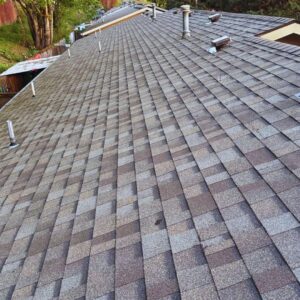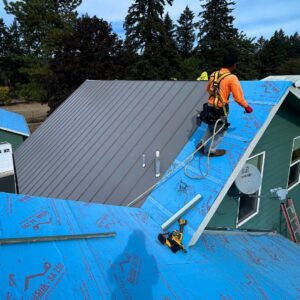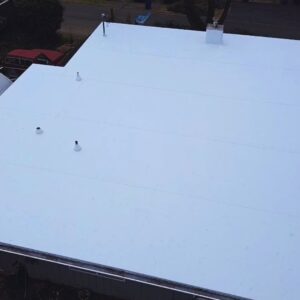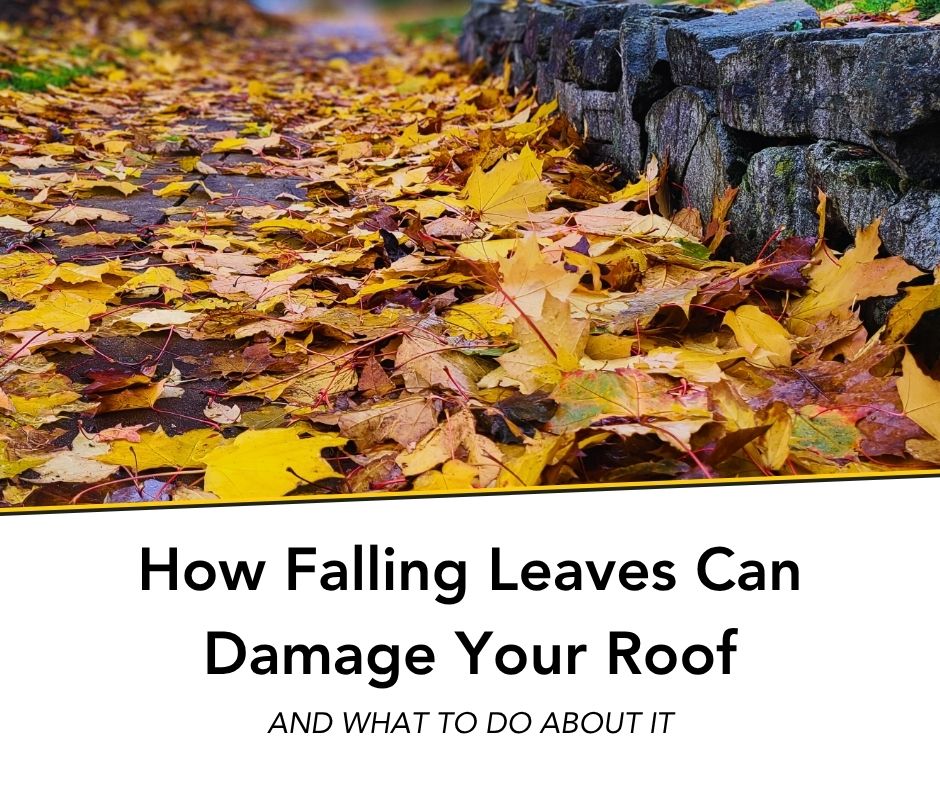

When you are considering your options for roofing in Oregon, choosing the right material for your home is about more than just appearance—especially during the summer and winter months. Depending on your local climate, Oregon summers can come with long dry spells, heightened UV exposure, and occasional heatwaves that hit you and your home hard. Well designed roofing in Oregon with the right materials for your climate can help keep your home cooler, reduce energy bills, and stand up to the unique challenges of the Pacific Northwest climate.
With that being said, here’s a look at popular roofing materials and how they perform during Oregon’s summer season:

Asphalt shingles (also known as composite shingles) are one of the most common choices for roofing throughout Oregon—and for good reason. Overall, they’re affordable, easy to install, and come in a variety of colors and styles allowing for greater flexibility in the home’s new look depending on the color and shingle design.
For hotter climates in Summer, lighter-colored asphalt shingles reflect more sunlight, helping to reduce heat buildup in your attic. By reducing the heat build-up, your HVAC or air conditioning systems need to run less, saving you money in the long run. Many modern shingles are also designed to be UV-resistant, which helps them last longer under strong sun exposure year after year.
Asphalt and Composite Shingles are Best for: Homeowners looking for an affordable, dependable option with good heat resistance and a large catalog of options when it comes to color and design.
Learn more about our shingle roofing services

Metal roofing in Oregon is becoming increasingly popular, and for good reason. Metal (of many kinds) works to reflect solar heat rather than absorbing it, which can significantly reduce cooling costs in the summer. Metal roofing is also lightweight, fire-resistant, and built to last 40–70 years with minimal maintenance. It can also come with 50-year manufacturers warranties (in some cases), offering a long-term assurance of quality. Metal roofing is also one of the most eco-friendly roofing options as most of the material is 100% recyclable at the end of its lifespan.
Here is an overview of some the metal roofing material options that are available to Oregon homeowners:
Bonus of Metal Roofing Options: Metal roofs shed rain easily and are great for collecting rainwater during Oregon’s transitional months if that is part of your environmental program for your property.
Learn more about our metal roofing services

TPO (also known as thermoplastic polyolefin) roofing material is a great option for flat or low-slope roofs. It’s heat-reflective, UV-resistant, and designed to handle both Oregon’s rainy winters and sunny summers. TPO roofing is commonly used on commercial buildings, but it’s becoming more popular for residential flat-roof designs as well.
One thing we have commonly found with older homes is that shingles were previously used in low slope areas where water may collect, leading to leaks and water damage for the homes. By assessing the water paths on your roof, a quality roofer will recommend installing TPO (or a similar material) in those low-slope (or no slope) areas to assist in directing water away from any weak points in your home.
TPO Flat Roofing is Best for: Flat-roofed homes / businesses or additions that need a strong, energy-efficient membrane that is fantastic for directing water away from your roof.
Learn more about our flat roofing services
Key Takeaways
Summers in the Pacific Northwest are feeling warmer year after year, and your roof plays a major role in home comfort and energy efficiency (very important as energy costs continue to rise throughout Oregon). When planning options for roofing in Oregon, you should consider how each material handles sun exposure, ventilation, and heat reflection specific to your property and local climate. A well-chosen roof and roof material can help lower cooling costs and keep your home more comfortable all season long. If you aren’t sure where to start, be sure to ask the estimators you are getting quotes from what material they think would best suit your home in the long term.
Need expert advice?
Reach out to a trusted local roofer who understands Oregon’s unique climate—and can recommend the right materials for your home. You can get in touch with our team here – we’d love to answer your questions.



